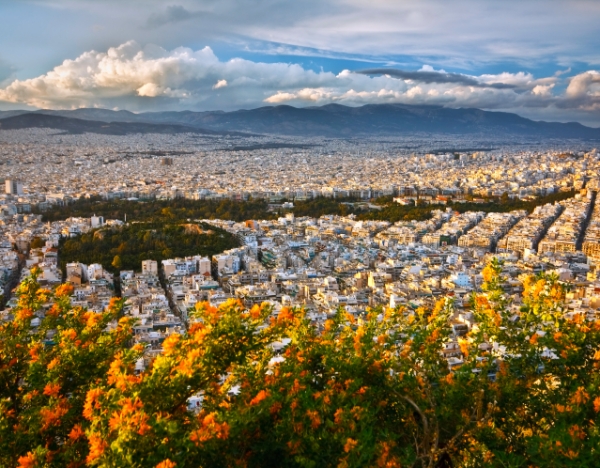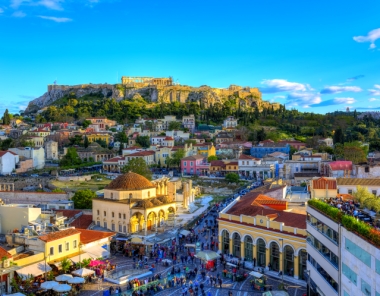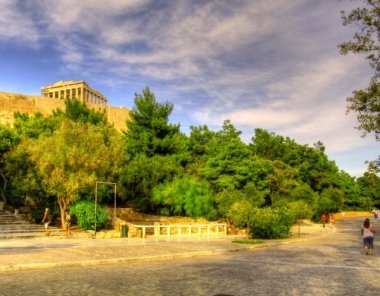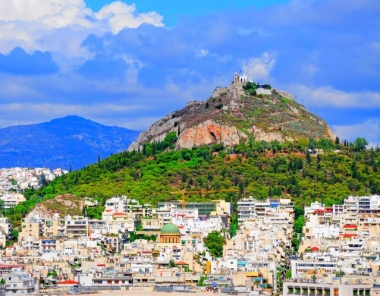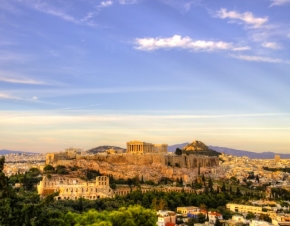If you are vacationing in Athens, there are excellent spots to discover in the eastern part of Attica, on the other side of mount Hymettus and Penteli.
On the east coast of Attica there is a series of settlements-cities that used to be summer resorts, yet now they constitute the main residence of the majority of their population. Lavrio, Porto Rafti, Loutsa, Rafina, Nea Makri, Mati are areas with excellent beaches and many options for accommodation, food, coffee, drink and entertainment.
In this side of Athens but off the coast, is also the area of Spata, with the International Airport Eleftherios Venizelos and the area of Paiania, with the famous Cave Koutouki.
A significant area of eastern Attica is the Marathon, one of the most historic parts of the entire Attica. It is here that the famous Battle of Marathon took place between Greeks and Persians, it is here that the Tomb of Marathon lies in honor of the fallen and of course it is here that the Athens Classic Marathon starts. Locations in East Attica with intense archaeological interest include Horopos with the Amphiaraeion and Brauron with the ruins of the Temple of Artemis.
Eastern Athens is an ideal destination for a day trip from central Athens, both for the permanent residents and for those who have chosen to spend their holidays in Athens.
Small and larger neighborhoods, each with its own beauty, circle Athens and wait for you to discover them. Pagrati Kessariani, Ilisia, Zografou and Nea Smyrni with one of the largest squares in Athens...
All these are residential areas, each with its own character and its own special market.
In each of these neighborhoods you will discover beautiful corners, excellent restaurants and small taverns to enjoy wonderful, well cooked food. Throughout the day several cafes offer delicious coffee and soft drinks, while in the evening bars of unique character help you experience a different side of Athens by night.
South from the city center and along the beach, are the areas of Faliro, Alimos, Glyfada, Voula and Vouliagmeni, ideal destination for a walk by the sea.
Starting from Faliro, there is a beautiful beach park, where you can take a walk on foot or bike and chill, enjoying your coffee, food or drink. Nearby is the Maritime Tradition Museum , with the Averof battleship that is definitely worth your attention. Moving to the south and passing thourgh Alimos, we reach Glyfada. This is a suburb with an enormous shopping area and the only golf course in Athens, for those who love this cosmopolitan sport. Continuing south there is Voula and then we end up in Vouliagmeni, which is said to be one of the most beautiful suburbs in Athens. Here also lies the famous Vouliagmeni lake, popular for its thermal waters. Continuing on the coastal road ( Athens-Sounion Avenue), you will stumble upon a series of excellent beaches, where you can opt for a swim, before we reach the southernmost tip of Attica; Sounion and the Temple of Poseidon.
Inevitably at some point you will get hungry and the Southern suburbs have the solution. Excellent restaurants ranging from luxury and gourmet, to family-run taverns, with flavors from Greek and international cuisine, along with cafes and snack-bars, are here to cater for you. Adding to that, imagine a perfect night-out by the sea. For the Athenians who live in the south, this is not a dream but a tangible reality that takes place once night falls. The fantastic beach clubs overlooking the sea and the special bars, offer you the chance to experience the Greek meaning of nightlife during your vacations.
If you go north from the central Athens you will find the areas of Psychico, Filothei, Marousi, Kifisia, Ekali, but also Chalandri, Melisia, Vrilisia, Pefki, Nea Erythrea and Agia Paraskevi.
The Northern suburbs were originally (and still are) mainly residential areas of the more affluent residents of Athens. They are characteristically green and quiet (compared to the hustle and bustle of the center of Athens). Filothei and Psihiko are areas where no big stores are authorized, whereas in Kifissia and Maroussi you have the opportunity to discover a wonderful shopping area with impressive shopping malls and stores. In Maroussi you will also find the OAKA athletic infrastructures that hosted a big part of the Olympic Games in 20004 and the opening-closing ceremonies.
If you stroll around Kifissia, you will admire magnificent mansions, many of which date back even to 19the century and are reminiscent of another era. Moreover, there you can visit the excellent Goulandris Museum of Natural History.
If you find yourself hungry somewhere in the Northern suburbs, you are lucky. There are several cozy cafes and snack-bars, as well as exquisite dinning-options, ranging from luxury and gourmet restaurants to family-run taverns, with flavors from Greek and international cuisine. And when the night falls, fantastic clubs and bars of unique character let you in the greek meaning of nightlife. I bet your warm bed will not even cross your mind...
According to mythology, there was a contest between goddess Athena and god Poseidon so as to elect the city's patron. The goddess won, thus giving her name to Athens and taking responsibility of the city's protection. The Parthenon is considered to be a dedication to Athena and this is why it hosts her statue.
There have been claims of Athens being inhabited already by 9,000 BC However, it is not until the 6th century B.C. that it gains its prominent space in history. It is from then onwards that it starts to take gigantic proportions and a dominant position in Greece with its naval power. Thanks to this power it acquires great wealth, with which some of the most important buildings of the city were made,especially during the "Golden Age of Pericles". The Parthenon on the Acropolis is the culmination of all this great development.
Following its defeat in the Peloponnesian War and the famine that accompanied it, Athens lost much of its acquired power. During Roman times Athens was still an important cultural center. Yet, after the looting it suffered by Sulla in 86 BC and Heruli in 267 AD, much of its infrastructure was destroyed and its further development was hindered.
Years later, the Byzantine domination together with the Frankish and Ottoman rule, constituted Athens even more diminished in size and importance.
When the Greek Revolution breaks in 1821, Athens is a small and relatively insignificant town. The shift in its history occurs in 1833, when it is proclaimed as the Greek State's capital, succeeding Nafplion. This signifies its new rapid development,which shapes the city in the image we have today.
Countless books have been written and documentaries have been filmed about the history and the significance of Athens. Yet, nothing can compare to a visit to the city. Go for the real thing!
Athens is the capital and the largest city of Greece, covering most of the region of Attica. Over the years, the city of Athens expanded so much that gradually Athens-city and Attica-region became almost identical notions. The region of Attica is 3.808 square km. Even though it occupies only 3% of the Greek territory, it is the place where over 1/3 of the total population is concentrated.
Athens, thanks to its unique attractions (with the Acropolis being the most renown) and its excellent museums, is a top tourist destination. Every year millions of tourists from all over the world choose to spend their holidays in Athens, or have it as a stopover before going to another of the dozens of wonderful places in Greece.
The region of Attica and particularly Athens, has everything you would expect from a European capital. Great shopping area, welcoming hotels and quality restaurants with vast variety. You will literally be at a loss: cool bars, clubs and cafes, theaters and cinemas, the famous Greek bouzoukia and several other entertainment proposals await for you.
Athens, just like any capital that respects itself, has an excellent transportation system, including Metro, trolleybuses, trams and buses. Unfortunately, traffic jams and the atmosphere they create cannot be avoided, but that's the price every big capital has to pay.
The city of Athens is in the basin of Attica, which is shaped by five mountains: Parnitha, Penteli, Hymettus, Mount Egaleo and Poikilo Mountain. The climate is temperate Mediterranean.
Athens is without doubt an ideal holiday destination.


